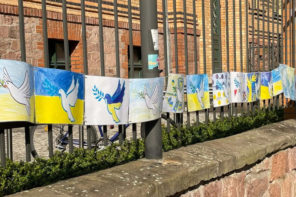This post marks the first installment of our special review section on Edible Identities: Food as Cultural Heritage.
Discussing and thinking about the relationship between food and identity is not new. However, the socio-cultural context in which the relationships between food and identities is being constructed has changed over time. The volume Edible Identities: Food as Cultural Heritage (2014), edited by Ronda Brulotte and Michael Di Giovine, addresses the global and local changes that are transforming and reframing the relationship between food and identities.
The central concerns of the book are not merely about foodstuffs themselves, but also about the global context in which discourses and practices surrounding food production and consumption are created.

Due to the length of the volume, this review is organized around several specific topics that appear throughout the book. The topics I have selected are: food and cultural heritage; the concept of terroir; authenticity and identity; and Hobsbawm’s “invented tradition”. These topics give the volume a consistent theoretical perspective despite the diversity in topics and levels of analyses of the contributions.
The politics of the creation of “heritage cuisine” inform some of the chapters of this volume. Di Giovine, for example, analyses how “everyday food” like artichokes have been revitalized and converted into “heritage ingredients” through cosmopolitan trends and religious revitalization movements in Italy. Terrioand Bendixalso analyse the intricacies of food as cultural heritage when they respectively discuss chocolate production in France and bread in Germany. In a chapter that provides a nice summary of the complex criteria that govern UNESCO’s policies, Sammellslooks at how a process (the French meal), a diet (the Mediterranean), and a cuisine (Michoacán/Mexico) have all been incorporated into UNESCO’s list of intangible heritage.
The term terroir has become an important element in the discourse surrounding the production of local foods.
Although terroir is defined through the “natural” aspects of a place (its geography, geology, climate, and biodiversity) the chapters in this volume suggest that an analysis of the concept should include politics as well. For example,Belascooffers an interesting take on food politics in Washington D.C.—on how the city’s environmental history, the efforts to “modernize” it, and the relationship between food and local identity are connected. As a matter of fact, Belasco argues that the “culture” of the U.S. capital destroyed local cuisines, and that only recently have there been some efforts to restore them. In the same manner, Garcia-Fuentes et al. discuss how socio-economic factors, including the Spanish Civil War, contributed to Spain’s reliance on local food markets more than other European countries. This, with the help of different print media and the popularisation of the Mediterranean Diet (UNESCO’S Intangible Cultural Heritage), led to the resurgence of Catalan cuisine linked to a particular region of Spain in the 1980s. In a somewhat different take, Mauriceshows how the idea of terroir can be linked to authenticity through the way foodstuffs look rather than how they taste, as in the case of Kyoto, Japan. This is an interesting reminder that authenticity is socially ascribed, and also reminds us of the aesthetic value of food.
The complicated and contradictory relationship between authenticity and identity is further elaborated in another set of essays that appear in the book. In their contribution, Brulotte and Starkman analyse “the tensions and contradictions” of the caldo de piedra, a Oaxacan dish prepared with hot river stones. This caldo is claimed to be the cultural property of a specific Oaxacan village and it is promoted as UNESCO’s intangible cultural heritage. The authors show, however, that the link between authenticity and identity can be contested on different fronts, especially when caldo de piedra is not specifically recognized by UNESCO. In a manner similar to Brulotte and Starkman, Kozorogdiscusses how global counter-cultural movements have fuelled Slovenians fascination with salamander brandy, an “indigenous psychedelic drug” that has become a source of pride and a national identity marker for some Slovenians even if its very existence is still highly disputed. Castellanos and Bergstresserexplore the polysemic value of corn in Mexico. They emphasize how the symbolic value of corn tortillas continues to resist manipulation even if global and national changes have transformed the production of corn and the preparation of tortillas. Williams-Forsonalso problematises the relationship between authenticity and identity through an analysis of African-American culinary heritage. She argues that African-American cuisine is not monolithic but, in fact, encompasses a diversity of practices, tastes, and experiences. Such diversity has been moulded by the “fractured” experiences provoked not only by slavery, but also, by political groups such as the Black Power movement in the 1960s.
In these essays it becomes clear that food is a contested symbol both outside and inside social groups, and that food itself is a historical entity that changes over time.
Perhaps one of the strongest currents that runs through the volume is Hobsbawm’s “invented tradition”, which appears as a recurring theme in several chapters. Here, I want to highlight the chapters by Paxson and Grasseni, recognizing that other chapters also deal with the concept of “invented tradition”. Paxson proposes that we complicate the boundaries between traditions and innovations when we think about American and French cheese. For Paxson, French traditions are not as old as imagined, nor are American innovations as novel as believed. In another chapter that deals with cheese, Grasseni explores how ideas of the “typical” and “diversity” are articulated in Italian mountain cheese, and how political power is exercised in the protection of cultural heritage, invention and reinvention. The concept of “invented tradition” is exemplified throughout the book, and provides an important analysis that reminds us that tradition and innovation are malleable discourses and practices that are frequently created, reproduced and challenged.
The final chapter in the book, written by Counihan, provides some important food for thought, as the author questions how cultural heritage and food activism can be powerful mechanisms of inclusion but can also serve as means of exclusion. In her essay, Counihan wonders whether the current emphasis on local foodways, and the localism that follows, is liberatory or reactionary, especially when we think about who is picking our food. This question resonates with most of the essays in the book.
The fourteen essays that comprise this volume manage to cover a lot of ground both geographically and thematically. In this sense one of the accomplishments of this collection is to present a wide array of ethnographic and discursive analyses that range from specific dishes (e.g. caldo de piedra) and beverages (e.g. salamander brandy), to national staples (such as cheese and bread) and international discourses around food as an identity marker. This collection of essays reveals that there is more than meets the eye when it comes to food, authenticity, and identity. This is especially relevant in a time when a growing number of people self-identify as foodies and seek to discover authentic cuisines and dishes.
On a critical note, the ways in which “tradition” and “heritage” are gendered, both in discourse and in practice, does not have a strong presence in most of the chapters of this volume. In her chapter, Clare Sammells hints at the contradictory aspects of how Mexican cuisine is portrayed as feminine (and indigenous) but performed (internationally) by male chefs (who are not perceived as indigenous). Brulotte and Starkman also suggest how gender roles might influence who gets to cook what in Oaxaca. Yet this aspect of how gender, food, and tradition intersect is not present in most of the essays. In the same way, the local and international politics of land, especially in relation to land grabbing and food production, are barely touched upon—perhaps because the framework of “cultural heritage” does not emphasize this type of analysis.
Overall, this edited volume successfully provides a context in which to understand how the “macdonalization” and “extreme localisms” throughout the world are giving rise to novel and creative strategies to construct and transform “edible identities”. These identities, as shown in the articles that compose this volume, work at different levels (the local, regional, and national) and, through the politics of food, create different “imagined communities”. For these reasons, this book is highly recommended for scholars in the social sciences and the humanities interested in the politics of food, identity and cultural heritage, especially in relation to local, regional, and national politics. Furthermore, its broad geographical focus makes it an ideal volume to include in introductory and advanced university courses.
Brulotte, Ronda L. and Di Giovine, Michael A. 2014. Edible Identities: Food as Cultural Heritage. Farnham: Ashgate. 244 pp. Hb: £65.00. ISBN: 9781409442646










